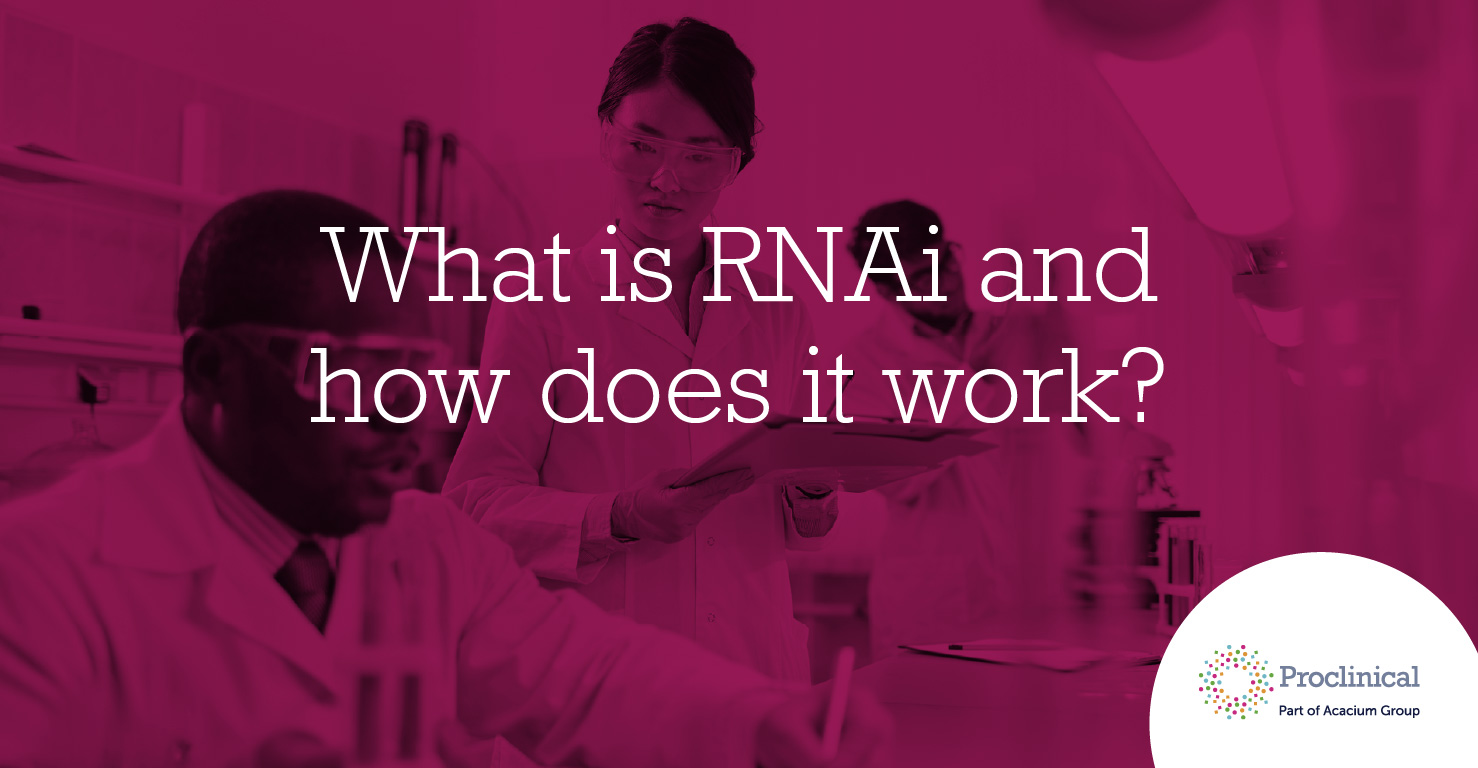.jpg?v=5acaf8c56b5c39639cbfab6ff4450840)
At the start of the millennium, all eyes were focused on a revolutionary breakthrough in science known as RNA interference (RNAi). Companies saw its potential to transform the lives of people living with diseases for which there were limited or non-existent treatment options and began to invest heavily into researching this exciting medical advancement. However, it was not until 2018 that the first RNAi drug, Alnylam’s Onpattro (Patisiran) was approved to treat the rare condition, hereditary transthyretin-mediated amyloidosis, which is a slowly progressive illness that affects the body's organs and tissues and is caused by the build-up of a protein called amyloid.
In an article by Labiotech, Brendan Martin, the Acting Head of Alnylam in Canada, the Middle East, and Europe, said “The past few years have seen recognition of RNAi come on leaps and bounds and the insights we have obtained from Onpattro and Givlaari are now fuelling a new chapter for this technology”. Here we take a closer look at how RNAi works and what potential it has to transform the future of healthcare and medicine.
What is RNAi?
RNA stands for ribonucleic acid, which is a nucleic acid present in all living cells. RNA interference (RNAi) is an innovative approach to specifically target and silence any gene involved in the cause or disease pathway. The small pieces of RNA that enable RNAi come in two different varieties: Small interfering RNA (siRNA) and MicroRNA (miRNA).
How does RNAi work?
RNA interference works in the same way for both siRNA and miRNA. Small RNA molecules come together to activate protein complexes. Once bound, they work to target mRNAs (messenger RNAs) to prevent ribosomes from continuing to synthesise the associated protein. As a result, production of the protein encoded by that mRNA is prevented.
How does RNAi therapy work?
RNAi shows a great deal of promise in molecular biology. The relationship between the target mRNA sequence and the sequence required for a functional siRNA or miRNA is deep-rooted and this allows scientists to synthesize interfering RNAs as needed. These RNAs then prevent protein synthesis in a more straightforward way than altering the genetic code.
RNAi drug delivery is now widely used for treating infectious diseases, chronic metabolic disorders, cardiovascular, neurological, urological, oncological and ophthalmological disorders. RNAi based medicine usually comes in the form of an injection or a topical delivery method. It involves nanoparticle, pulmonary, nucleic acid and aptamer drug delivery technologies. These technologies are also used for analysing gene functions and developing gene silencing treatments.
What are the benefits of RNAi therapeutics?
An advantage of RNAi is the ability to design precisely targeted medicines for almost any gene, regardless of the function of the gene. This can make solutions for complex situations possible and help reduce the impact of side effects.
Therapeutics based on RNA interference offer a powerful method for rapidly identifying specific disease targets. This offers a faster way, compared to traditional methods, of developing new novel ways of treating diseases.
What are the opportunities for RNAi therapeutics?
The global RNAi drug delivery market increased by 7% (CAGR) between 2014 and 2019 and it is expected to generate moderate growth over the next 5 years, with the need to reduce the prevalence of chronic medical and genetic disorders driving growth.
The coronavirus pandemic, that spread across the world in 2020, has significantly increased the demand for RNAi drug delivery technologies. Targeted delivery methods are gaining traction for the administration of antiviral drugs as they are induced by small interfering RNA that can inhibit the expression of viral antigens.
Furthermore, various advancements in technology, such as the development of innovative synthetic delivery carriers and bio-vectors, are expected to increase the demand for RNAi. The nanocarriers, including siRNA or microRNAs (miRNA) play a pivotal role in the development of precision medicines and identifying altered cellular molecules and metabolites.
Found this blog interesting? Contact us to find out more and follow us LinkedIn and YouTube.

.png)





.png)

.png)
.png)

.png)
.png)













